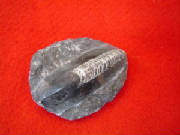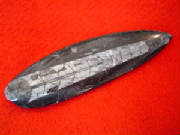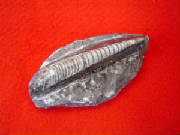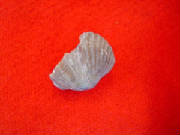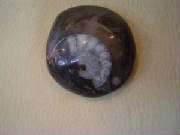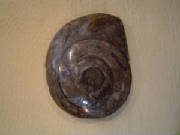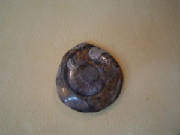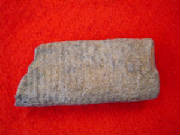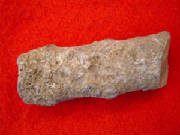|
Fossils
A fossil is a small
fragment of the Earth’s history, a small piece of the record of life – of our own history.
Fossils are still being formed today, grounds shift, water flows, trees fall, sap drops – in 2,000
years people will study fossils that tell them about this period of time. Fossils
are direct evidence that prehistoric life existed.
Fossils are not
just from dinosaurs, they are from mammals, amphibians, birds, water creatures, trees, plants, and insects. The most common fossils we see today are the bony or woody parts of an organism that have been turned to
stone.
We have an interesting
selection of fossils in our store, please come in to see them all!
Please check in often because we will frequently update the product pages with new items.
Don't see what you're looking for? Please use our site map for a quick reference
|
|
 |
 |
|
ORTHOCEROUS
SILURIAN
MOROCCO
These fossils are from Morocco.
Orthocerous was a marine cephalopod, this particular species was straight shelled and they thrived some 400+ million years
ago in the Paleozoic Era, during the Silurian period. These fossil Plaques have been carved and chipped to expose the
fossils and then polished to highlight the fossil speciman(s). These Orthocerous are beautiful decorator
pieces as well as collectibles for the fossil collector.
|
|
Length 3".
Price: $12.00
|
|
|
|
Length 5-1/2"
Price: $20.00
|
|
|
|
Length 4"
Price: $15.00
|
|
|
|
 |
 |
 |
 |
|
BRACHIOPODS
Brachiopods are marine animals
that, upon first glance, look like clams. They are actually quite different from clams in their anatomy, and they are not
closely related to the molluscs. Brachiopods may seem rare in today's seas, yet they are actually
fairly common. They often make their homes in very cold water, either in polar regions or at great depths in the
ocean, and therefore are not often encountered. There are about 300 living species of brachiopods.
|
|
 |
 |
 |
 |
 |
|
AMMONITE
DEVONIAN
MOROCCO
Ammonites are mollusks, just like squids and octopuses. They
are know to have existed from the Devonian Period of the Paleozoic Era, roughly 355 to 410 million years ago. They became
extinct at the end of Cretaceous Period of the Mesozoic Era. So far, nearly 10,000 types of ammonites are known to us.
Ammonites are used as index fossils (used to indicate the age of a stratum) and therefore considered a vital group for the
study of the evolution of life. These ammonites are from Morocco.
|
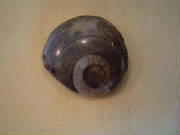
|
1-1/2" Diameter
|
|
|
|
1-5/8" Diameter
|
|
|
|
1-7/8" Long
|
|
|
|
1-9/16" Diameter
|
|
|
|
 |
 |
 |
 |
|
CRINOID STEMS
Crinoids, although relatives of
starfish and seacucumbers, grew attached to the seafloor like corals many years ago. Their jointed calcareous skeleton was
branching and plant-like in appearance, hence the name sea lily.
A few crinoid species still exist
today but they were most abundant in the late Paleozoic Era (400 to 250 million years ago). The columnar plates of the branches
were formed of large crystals of the common mineral calcite (calcium carbonate) and so when broken up they form a glistening,
coarse-grained limestone easily mistaken for marble.
|
|
1" Diamter x 1-15/16" Long
|
|
|
|
3/4" Diameter x 2-1/8" Length
|
|
|
|
 |
 |
 |
|
You will not believe all the wonderful items we have in stock!
Rocks and Things located at
114 Oak Avenue/Upper Street/Old US19
in Historic Downtown Spruce Pine,
NC
Just 5 miles off the Blue Ridge Parkway!
828-765-1667
|
|
